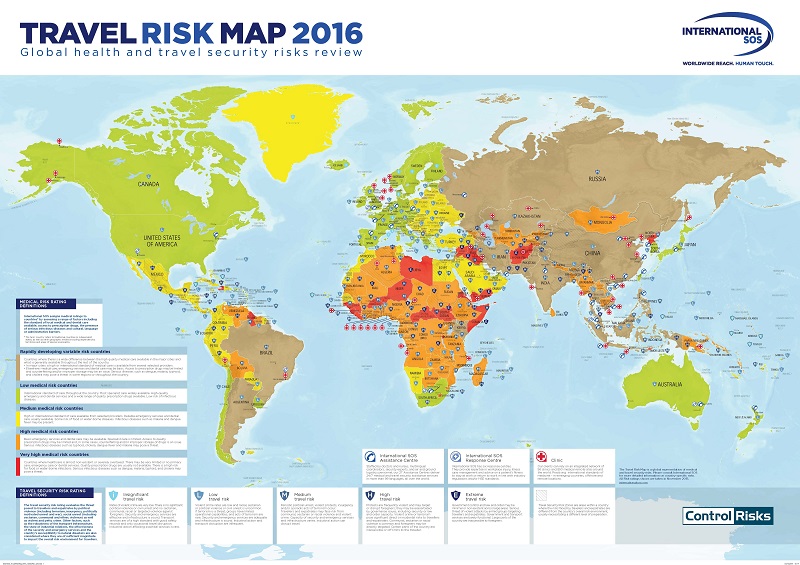International SOS Introduces Global Travel Risk Map
The Travel Risk Map has been created to help travellers identify pre-trip preparations that may be required for their destination of travel. We know from experience that even in countries with low medical risk rating with available and high-quality medical services, travellers may still need assistance with language or in understanding an unfamiliar health care policy – both of which can be significant barriers to obtaining timely and effective care.
Focussing travellers’ preparation on the health aspects of their travel is also a significant factor in reducing health impacts during travel. Globally, a large proportion (58%) of incidences abroad, are due to known and pre-existing health concerns. In an Ipsos Global Advisor study more than 70% of senior executive travellers had had a medical problem abroad, yet on 15% thought about assessing the health care of their destination country.
In three-quarters of countries, a worldwide medical risk is measured at various levels to travel security risk, and there are differences in levels of risk within many countries.
Travel security risk ratings from International SOS and Control Risks are based on the prevailing threat posed to travellers and expatriates from several factors including social unrest, political violence, and crime. Transport infrastructure and emergency services are also considered as they may impact the overall ability of an organisation to mitigate or respond to risks faced by their employees.
“We created the Travel Risk Map to help travellers align their pre-trip preparations proportionately with the risks they may encounter in a particular location. Even in countries with a low medical risk rating and state of the art medical services, travellers may still need assistance with language or navigating an unfamiliar health care system – both of which can be significant barriers to obtaining care.” said Dr. Irene Lai, Medical Director of Information and Analysis for International SOS
International SOS teams determine medical risk ratings based on factors like environmental risks, road and security conditions, endemic diseases, and the quality and availability of health care. Information from public data sources and the first-hand knowledge of International SOS Regional Medical Directors is fed into a proprietary algorithm based on 24 indicators to determine each country’s rating.


Leave a Comment
* Fields marked with this asterisk are mandatory.